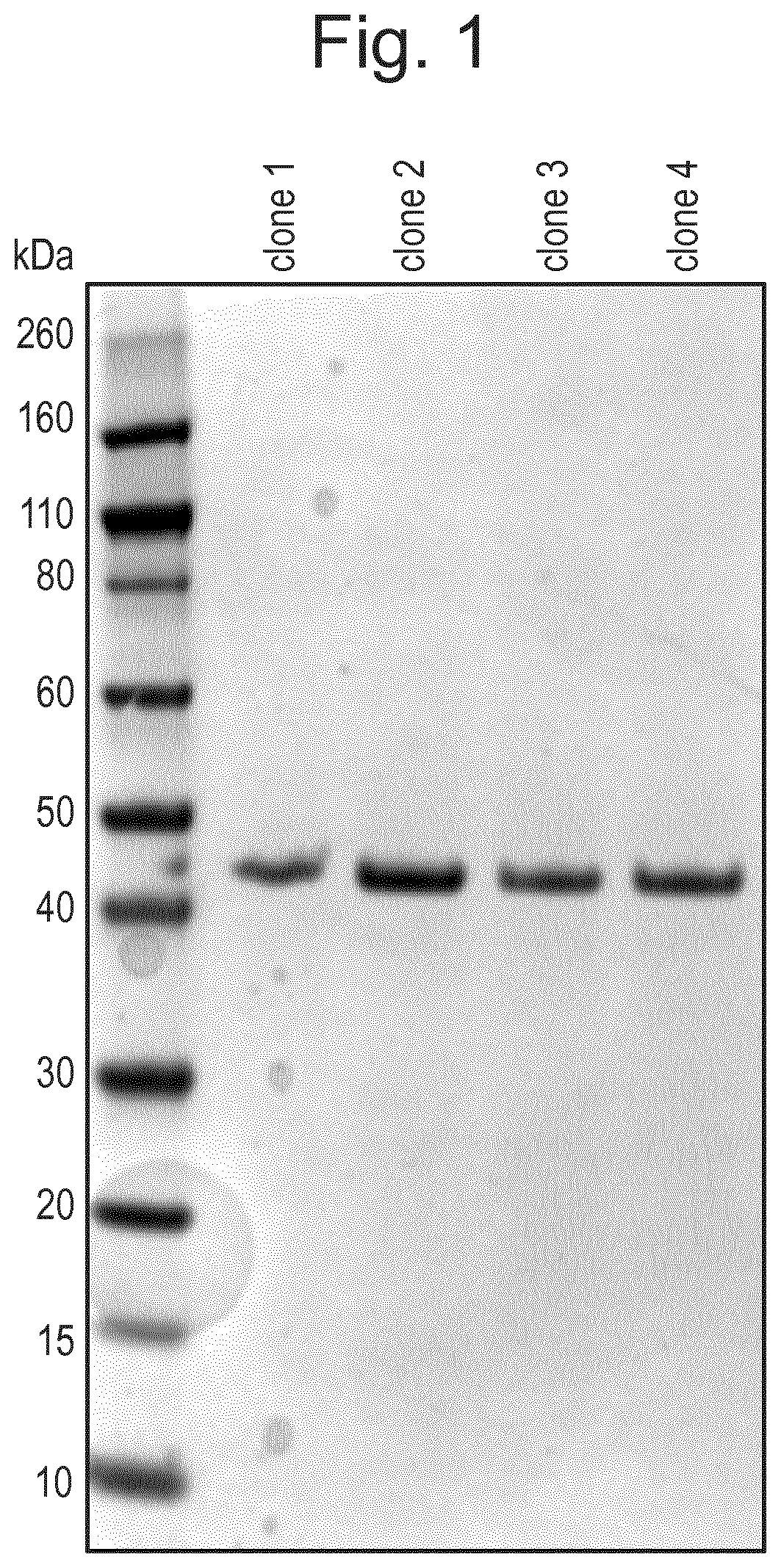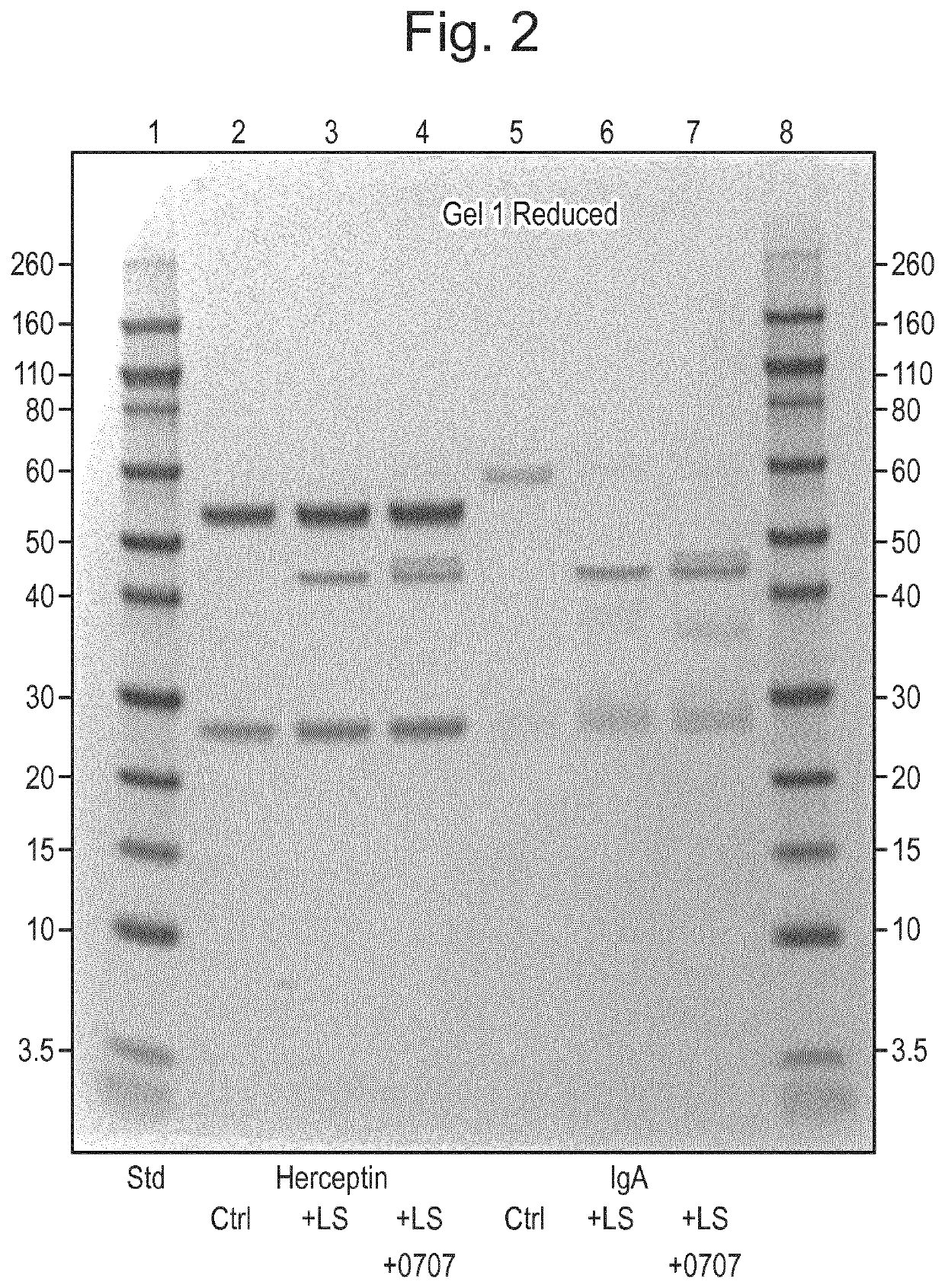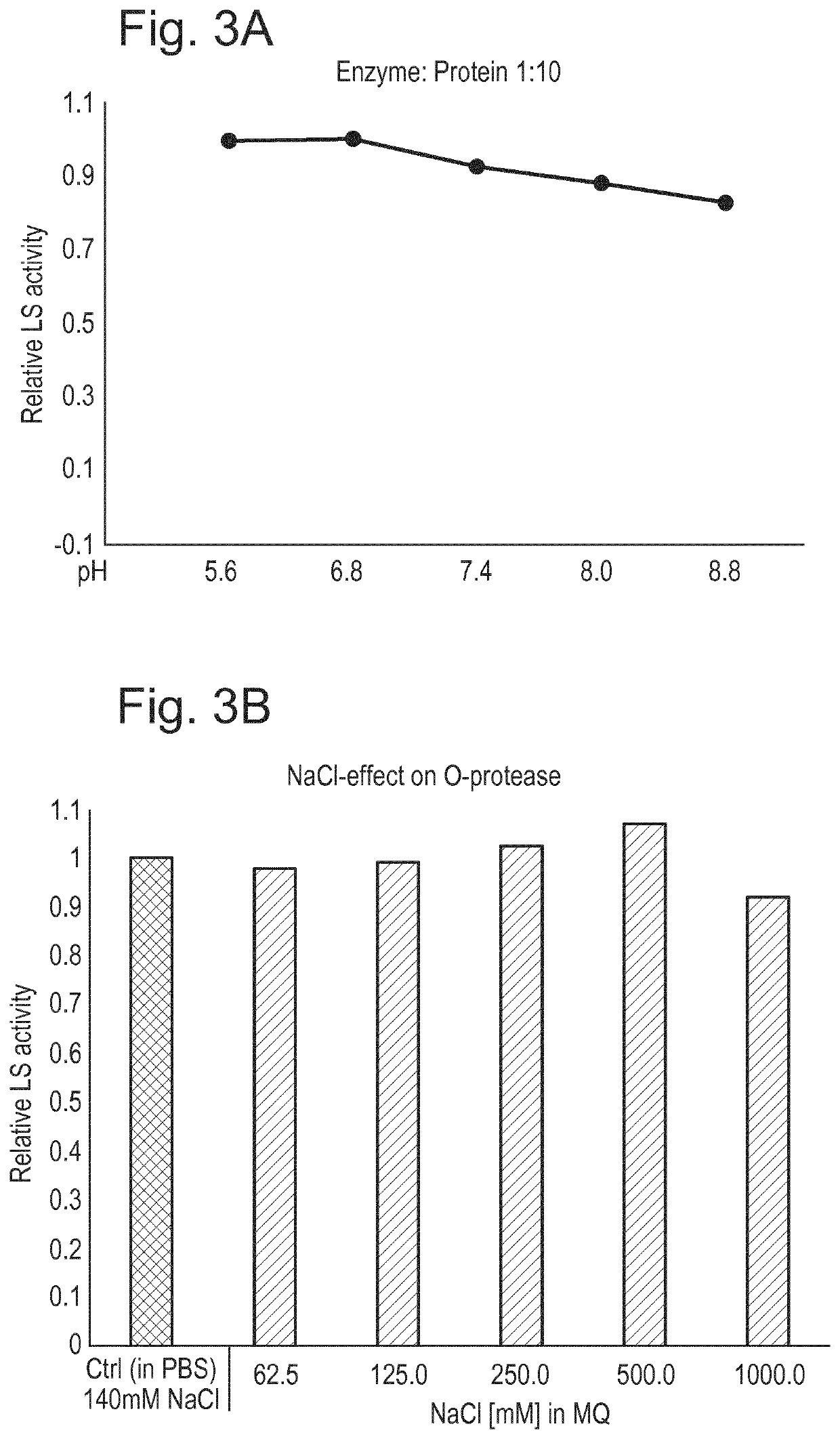Protease and Binding Polypeptide for O-Glycoproteins
a technology of o-glycoproteins and proteases, applied in the field of new endoproteases, can solve the problems of limited usefulness of medicine, ineffective tools and inability to efficiently study glycans and glycoproteins
- Summary
- Abstract
- Description
- Claims
- Application Information
AI Technical Summary
Benefits of technology
Problems solved by technology
Method used
Image
Examples
example 1
[0191]Materials and Methods
[0192]Mutagenesis of LS
[0193]Site-directed mutagenesis using Q5 (NEB) was performed according to manufacturer's instructions (annealing temperature 68° C., 3 min elongation) using primers E206A_fwd 5′-ATGGCGCACGC GCTGGGCCACG-3′ and 5′-GCCACCGTAC CATTTCGTC-3′ (rev); thus changing a glutamic acid to an alanine in an Amuc1119 gene from Akkermansia muciniphila to create the mutant, Amuc1119E206A (LSE206A). The construct was transformed into DH5c E. coli, isolated and verified using sequencing (GATC Biotech).
[0194]Recombinant Expression of LS and LSE206A
[0195]The gene Amuc1119 from Akkermansia muciniphila ATCC BAA-835, and a mutant, Amuc1119E206A (Amuc1119-LS; Amuc1119E206A-LSE206A), were codon optimized for expression in E. coli (DNA 2.0) and cloned into an expression vector with a C-terminal 6×His-tag as part of the fusion protein.
[0196]The codon-optimized genes were transformed into BL21(DE3) Star cells. E. coli was routinely cultured in LB at 37° C., 180 r...
example 2
[0234]Introduction
[0235]The LSE206A mutant described in Example 1 incorporates a site-directed mutation of the active site of LS (abxHEbbHbc to abxHAbbHbc), removing the electron transfer capacity of the enzymatic cleft. As is explained further below, upon further stress testing it was found that although this change reduced O-glycoprotease activity relative to the wild-type sequence it did not completely eliminate it. Accordingly the inventors have developed and characterized another mutant incorporating an additional substitution in the enzymatic cleft. Specifically, a His residue important in the orientation of the co-factor zinc ion was replaced with an Ala. The resulting double-mutant is referred to as H205A / E206A (abxHEbbHbc to abxAAbbHbc).
[0236]2.1 Production of the Double-Mutant
[0237]Site-directed mutagenesis using standard protocols (e.g. as in Example 1) was used to change both a histidine and a glutamic acid to alanine relative to the Amuc1119 gene of Akkermansia muciniph...
PUM
| Property | Measurement | Unit |
|---|---|---|
| pH | aaaaa | aaaaa |
| total volume | aaaaa | aaaaa |
| pH | aaaaa | aaaaa |
Abstract
Description
Claims
Application Information
 Login to View More
Login to View More - R&D
- Intellectual Property
- Life Sciences
- Materials
- Tech Scout
- Unparalleled Data Quality
- Higher Quality Content
- 60% Fewer Hallucinations
Browse by: Latest US Patents, China's latest patents, Technical Efficacy Thesaurus, Application Domain, Technology Topic, Popular Technical Reports.
© 2025 PatSnap. All rights reserved.Legal|Privacy policy|Modern Slavery Act Transparency Statement|Sitemap|About US| Contact US: help@patsnap.com



